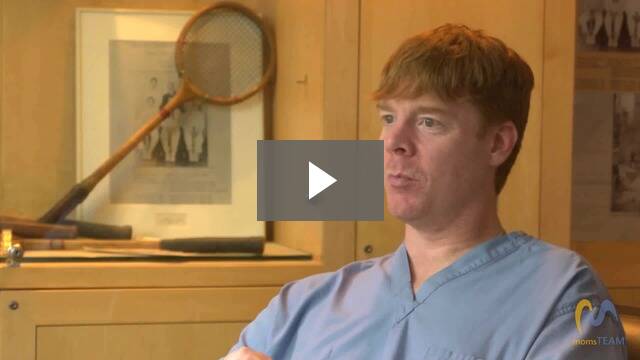Recent reports in the media (1,2) suggest that some professional athletes - most famously, Denver Bronco quarterback Peyton Manning(1) - intentionally underperform on a baseline computerized neurocognitive test - "sandbag" the test, in the parlance - so that, in the event they suffer a concussion and are then asked to take a post-concussion test, they will perform comparatively better and therefore be allowed to return to play sooner. Indeed, a recent article in the New York Times (2) suggests that reports of other N.F.L. players, besides Manning, trying to subvert the test are "rampant."
 But before your young athlete thinks they can outsmart the test, they should be forewarned: sandbagging is much harder than an athlete may think, say two recent studies (3,4). The reason is that the online version of the most widely used neurocognitive test (the ImPACT test) is programmed to automatically "flag" test protocols that seem suspicious,
But before your young athlete thinks they can outsmart the test, they should be forewarned: sandbagging is much harder than an athlete may think, say two recent studies (3,4). The reason is that the online version of the most widely used neurocognitive test (the ImPACT test) is programmed to automatically "flag" test protocols that seem suspicious,
The two studies show that these built-in indices are very good at identifying athletes who try to intentionally perform more poorly on computerized neurocognitive tests. The first, done in 2012,(2) showed that, while it is possible for athletes to "sandbag" their baseline neuropsychological testing without reaching threshold on "red flags" or validity indicators, only 11% were able to do so successfully.
The 2013 study (3) by researchers at St. Joseph's University in Philadelphia confirmed the findings of the earlier study that intentionallly underperforming on baseline testing using ImPACT is extremely difficult to achieve without detection. Using validity indicators built into the ImPACT test, 70% of those told to malinger without guidance, and 65% of coached malingerers were detected. Using the forced-choice validity measure within the Word Memory portion of ImPACT, 95% of naїve malingers and 100% of coached malingers were detected
One problem is that only half of athletic trainers, according to a 2009 study (5), bother to examine baseline test results for validity. While neuropsychologists, including MomsTEAM's expert sports concussion neuropsychologist, Rosemarie Scolaro Moser, PhD and other concussion experts (6,7), and the Centers for Disease Control (8) continue to recommend that the results of baseline tests should be interpreted by a neuropsychologist, and that, in the ideal world, neuropsychologists oversee the administration of such tests as well, the two sandbagging studies suggest that even a simple visual inspection of ImPACT results for the presence of red flags - which does not require significant time or educational training - should be able to identify 70% to 90% of athletes attempting to sandbag their baselines, says Philip Schatz, Ph.D., Professor of Psychology at St. Joseph's University, and author of the 2013 study.
Dr. Schatz warns, however, that "athletes may become 'savy' to these findings and alter their approach, making it necessary for test developers to incorporate multiple symptom validity measures, of different formats, within the same test." "As the use of concussion testing continues to increase, invalidity criteria will need to be an ongoing subject of research, given that athletes will likely continue to find ways of attempting to outsmart the tests, as well the professionals who are attempting to care for them."
1. Reilly, R (2011). Talking football with Archie, Peyton, Eli. http://sports.espn.go.com/espn/news/story?id=6430211 (retrieved May 10, 2013).
2. Pennington R. (2013) Flubbing a Baseline Test on Purpose Is Often Futile." (http://www.nytimes.com/2013/05/06/sports/sandbagging-first-concussion-te...)(retrieved May 5, 2013).
3. Erdal K. Neuropsychological Testing for Sports-related Concussion: How Athletes Can Sandbag Their Baseline Testing Without Detection. Arch Clin Psych 2012;27(5):473-479.
4. Schatz P, Glatts C. "Sandbagging" Baseline Test Performance on ImPACT, Without Detection, Is More Difficult than It Appears. Arch Clin Neuropsychol (published online ahead of print February 11, 2013).
5. Covassin T, Elbin R, Stiller-Ostrowski J, Kontos A. Immediate post-concussion assessment and cognitive testing (ImPACT) practices of sports medicine professionals. J Athl Tr 2009;44(6):639-644.
6. Echemendia R, Herring S, Bailes J. Who should conduct and interpret the neuropsychological assessment in sports-related concussion? Br J Sports Med 2009;43 (Suppl I):i32-i35.
7. McCrory P, et al. Consensus statement on concussion in sport: the 4th International Conference on Concussion in Sport held in Zurich, November 2012. Br J Sports Med 2013;47:250-257 (neuropsychological testing "should ideally be performed by a trained neuropsychologist ... [who is] in the best position to interpret NP tests by virtue of their background and training.")
8. Centers for Disease Control and Prevention. FAQs about Baseline Testing among Young Athletes (http://www.cdc.gov/concussion/pdf/baseline_testing_FAQs-a.pdf)(accessed April 16, 2012)(baseline tests should only be administered by a trained health care professional, and "only a trained health care professional with experience in concussion management should interpret the results of [a] baseline exam," and, "when possible, ideally a neuropsychologist should interpret the computerized or paper-pencil neuropsychological test components of a baseline exam.")
Posted May 10, 2013









